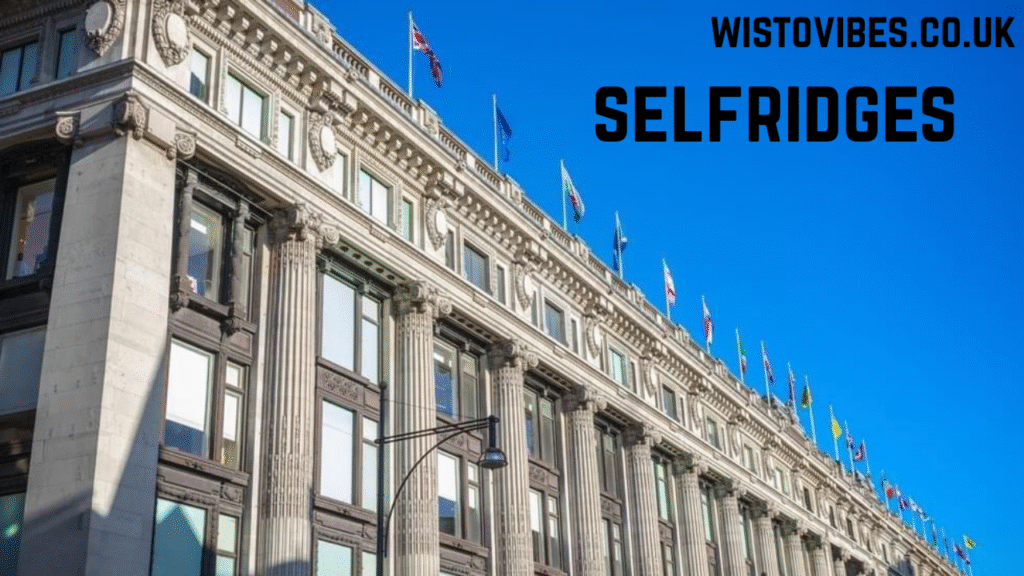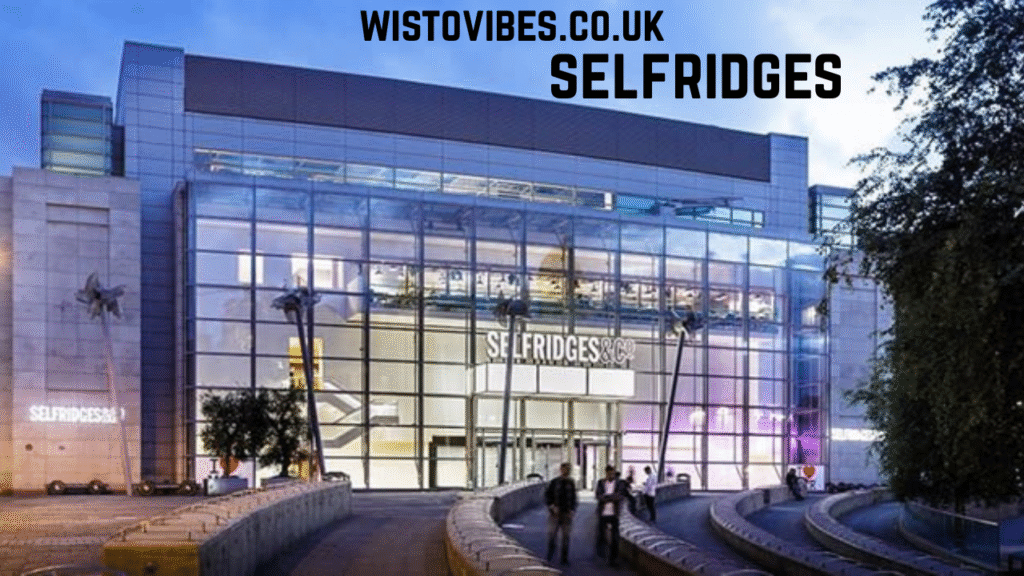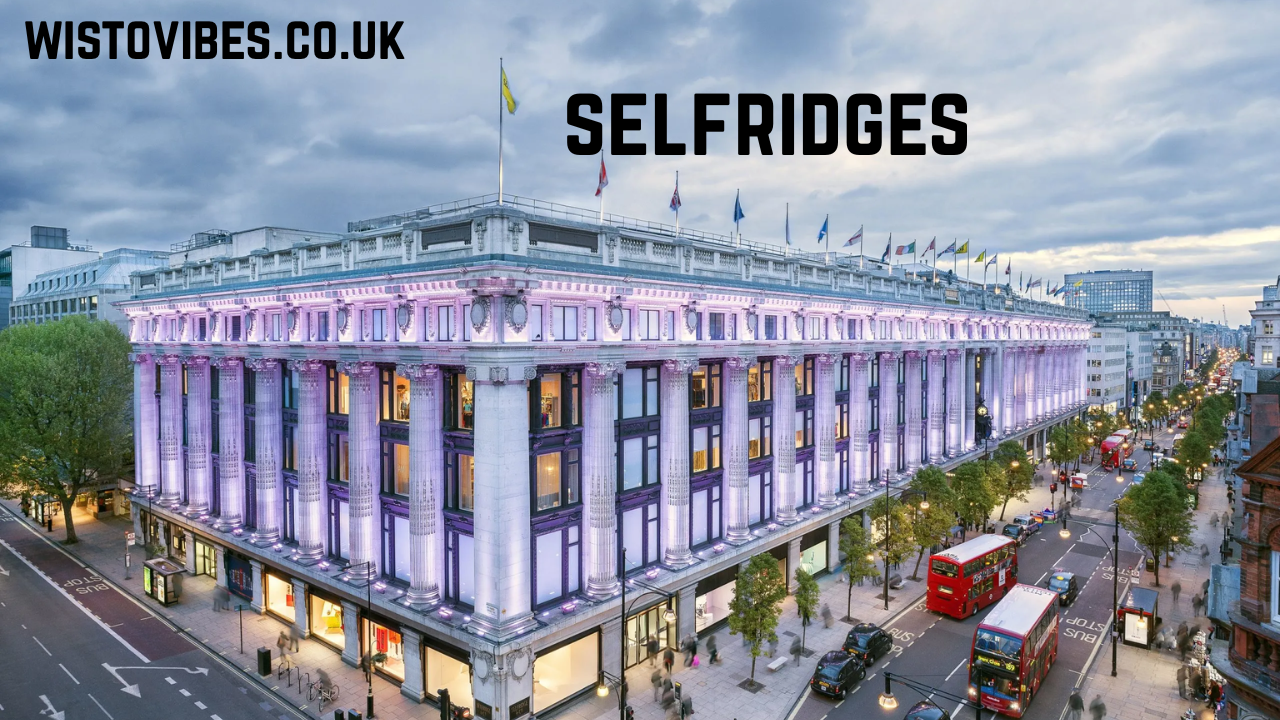Selfridges stands as one of the most iconic and luxurious department stores in the world, representing a fusion of visionary retailing, architectural brilliance, and unmatched customer experience. Established in 1909 by the ambitious American entrepreneur Harry Gordon Selfridge, Selfridges changed the face of British retail forever. When the first store opened on Oxford Street, London, it was more than just a place to shop — it was an experience, a destination that invited people not just to buy, but to explore, enjoy, and celebrate the art of shopping. Harry Selfridge believed shopping should be a form of entertainment and luxury accessible to all, and that philosophy became the foundation for the Selfridges empire. The store revolutionized retail through innovations such as lavish window displays, organized departments, and customer-friendly service — all revolutionary ideas for its time.
Architectural Grandeur and the Beauty of Design

The architecture of Selfridges is a masterpiece of early twentieth-century design. Its Oxford Street flagship remains a stunning example of neoclassical grandeur, designed by American architect Daniel Burnham. The massive Portland stone façade, adorned with Ionic columns and intricate carvings, instantly became a London landmark. Inside, Selfridges was conceived as a palace of commerce, with vast open spaces, sweeping staircases, and elegant displays that transformed shopping into an immersive sensory experience. The building’s design allowed natural light to flood in, enhancing the feeling of sophistication and modernity. Over the decades, Selfridges has carefully preserved its architectural heritage while integrating cutting-edge design innovations. From digital art installations to interactive spaces, the store has always remained a living, breathing fusion of history and modern style.
The Philosophy of Innovation and Customer Experience
What truly sets Selfridges apart from other department stores is its enduring commitment to innovation and customer experience. From its very beginning, Selfridges placed the shopper at the center of every decision. Harry Gordon Selfridge’s famous motto, “The customer is always right,” became a guiding principle that continues to define the brand today. The store was among the first to introduce features that were revolutionary for the time — from a perfume counter that allowed customers to try fragrances before buying, to live demonstrations of new technologies. Over time, Selfridges expanded this innovative spirit by integrating art exhibitions, live performances, and even science installations into its retail spaces. This focus on blending culture with commerce created an environment where shopping became an emotional and intellectual experience as much as a transactional one.
Selfridges as a Cultural and Social Landmark
Beyond retail, Selfridges has always served as a cultural and social icon in British life. It is not merely a department store; it is a destination where art, fashion, and culture intersect. Throughout the twentieth century and into the modern era, Selfridges has hosted exhibitions, fashion shows, and artistic collaborations that reflect the pulse of contemporary culture. From supporting British designers to hosting avant-garde installations, Selfridges constantly reinvents itself as a cultural hub. The store’s commitment to the arts extends to its window displays, which are legendary for their creativity and storytelling power. Every display is a visual masterpiece, drawing crowds from around the world who come to admire the innovation and artistry that define the Selfridges aesthetic.
Expansion and the Global Influence of Selfridges

While the original Oxford Street flagship remains the heart of the brand, Selfridges expanded its presence with additional stores in Birmingham, Manchester, and Trafford. Each location embodies the same dedication to luxury, design, and customer experience that made the London store famous. The Birmingham Selfridges, with its futuristic, bubble-like façade designed by architects Future Systems, is one of the most recognizable modern buildings in the United Kingdom. Beyond Britain, the influence of Selfridges has spread worldwide, inspiring department stores and luxury retailers across continents. The Selfridges model of combining shopping, entertainment, and cultural engagement has become a blueprint for modern retailing in cities from New York to Tokyo. The brand’s success has proven that even in the digital age, physical retail can thrive when it is rooted in creativity and experience.
The Evolution of Selfridges in the Digital Age
In an era dominated by e-commerce and technological transformation, Selfridges has continued to evolve without losing its essence. The company embraced digital innovation early, creating an online shopping experience that reflects the same sense of luxury and personal touch as its physical stores. Yet what distinguishes Selfridges is how seamlessly it blends digital technology with human interaction. From personalized online services and virtual styling consultations to digital art installations and augmented reality experiences in-store, Selfridges uses technology to enhance — not replace — the emotional connection between brand and customer. The store’s digital transformation reflects its ability to adapt to changing times while maintaining its position as a global leader in luxury retail.
Sustainability and the Future of Responsible Retailing

In recent years, Selfridges has made sustainability a central pillar of its business philosophy. The company’s “Project Earth” initiative represents a major step toward creating a more ethical and environmentally responsible retail model. Through sustainable sourcing, resale programs, repair services, and circular fashion initiatives, Selfridges is leading the charge in transforming how luxury retail can operate responsibly. The store encourages customers to make conscious choices by offering eco-friendly products and promoting brands that prioritize ethical production. Selfridges has also pledged ambitious long-term sustainability goals, including achieving net-zero carbon emissions and supporting a fully circular retail economy. This commitment not only aligns with global environmental trends but also reinforces the brand’s reputation as a forward-thinking, socially conscious institution.
The Selfridges Experience More Than Just Shopping
Visiting Selfridges is unlike any other retail experience. The store is designed to engage all senses, offering a blend of luxury, discovery, and inspiration. From the moment visitors enter, they are greeted by an atmosphere of elegance, creativity, and warmth. The layout is carefully curated to guide customers through a journey that includes not just high-end fashion and beauty, but also fine dining, art installations, and immersive events. Selfridges’ famous food hall, with its array of gourmet delights, adds a culinary dimension to the shopping experience. Whether browsing luxury fashion houses or exploring emerging designer collections, customers feel part of something larger — a celebration of design, craftsmanship, and imagination. Every visit to Selfridges is a reminder of how shopping can be transformed into an art form.
The Global Recognition and Awards of Selfridges
Selfridges has earned countless accolades that recognize its innovation, customer service, and retail excellence. The store has repeatedly been named the “Best Department Store in the World” by international retail organizations. These awards celebrate not only its commercial success but also its cultural influence and pioneering approach to modern retailing. The store’s ability to remain relevant for more than a century in an industry defined by constant change is a testament to its adaptability and vision. Selfridges is not content to rest on its legacy; it continues to push boundaries, experiment with new ideas, and redefine what a department store can be in the twenty-first century. This recognition cements its status as an enduring global icon of quality, creativity, and sophistication.
Conclusion
Selfridges is far more than a shopping destination — it is a living legacy of innovation, artistry, and customer-centered philosophy. From its inception in 1909 to its position today as a global leader in luxury retail, Selfridges has never stopped evolving. It represents the perfect harmony between heritage and modernity, architecture and fashion, commerce and culture. Its founder’s belief that shopping should be joyful, inspiring, and inclusive remains at the heart of everything Selfridges does. As it continues to embrace sustainability, digital transformation, and artistic expression, Selfridges stands as a symbol of how retail can shape not just markets but lifestyles and cultural identities.
FAQs
Q1: When was Selfridges founded?
Selfridges was founded in 1909 by Harry Gordon Selfridge, an American retail visionary who transformed the concept of shopping in Britain.
Q2: Where is the main Selfridges store located?
The flagship Selfridges store is located on Oxford Street in London, one of the most famous shopping destinations in the world.
Q3: What makes Selfridges different from other department stores?
Selfridges is known for its innovation, architectural beauty, world-class customer service, and its unique fusion of retail, culture, and art.
Q4: Does Selfridges promote sustainability?
Yes, through its “Project Earth” initiative, Selfridges promotes eco-friendly practices, circular fashion, and responsible sourcing.
Q5: Why is Selfridges considered a cultural landmark?
Selfridges is more than a store; it is a space that celebrates creativity, design, and social engagement, making it a cultural icon for over a century.




